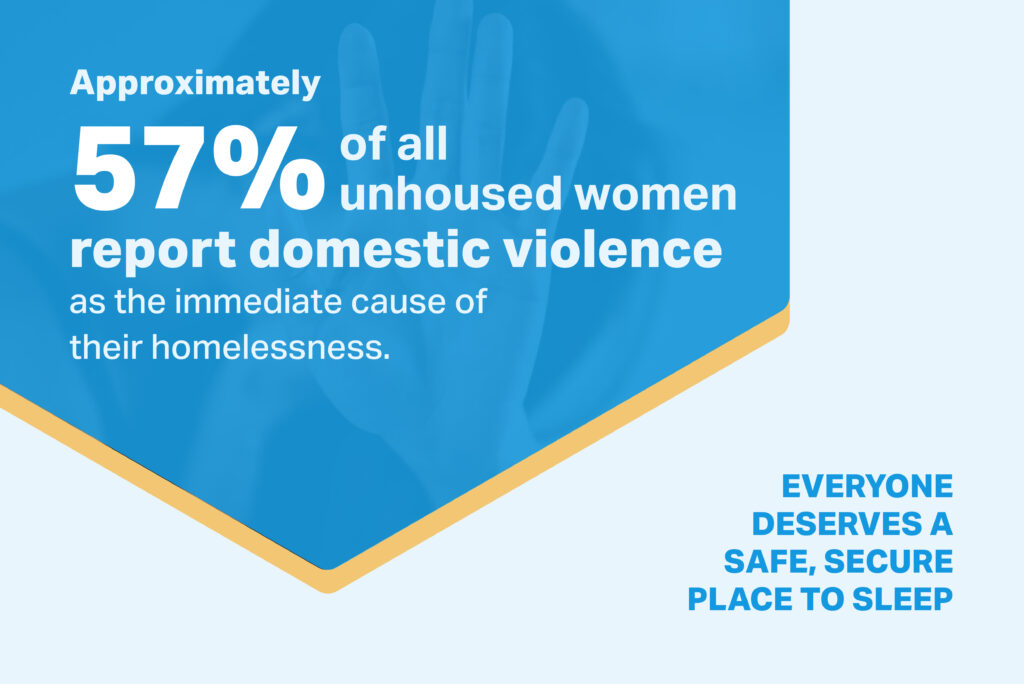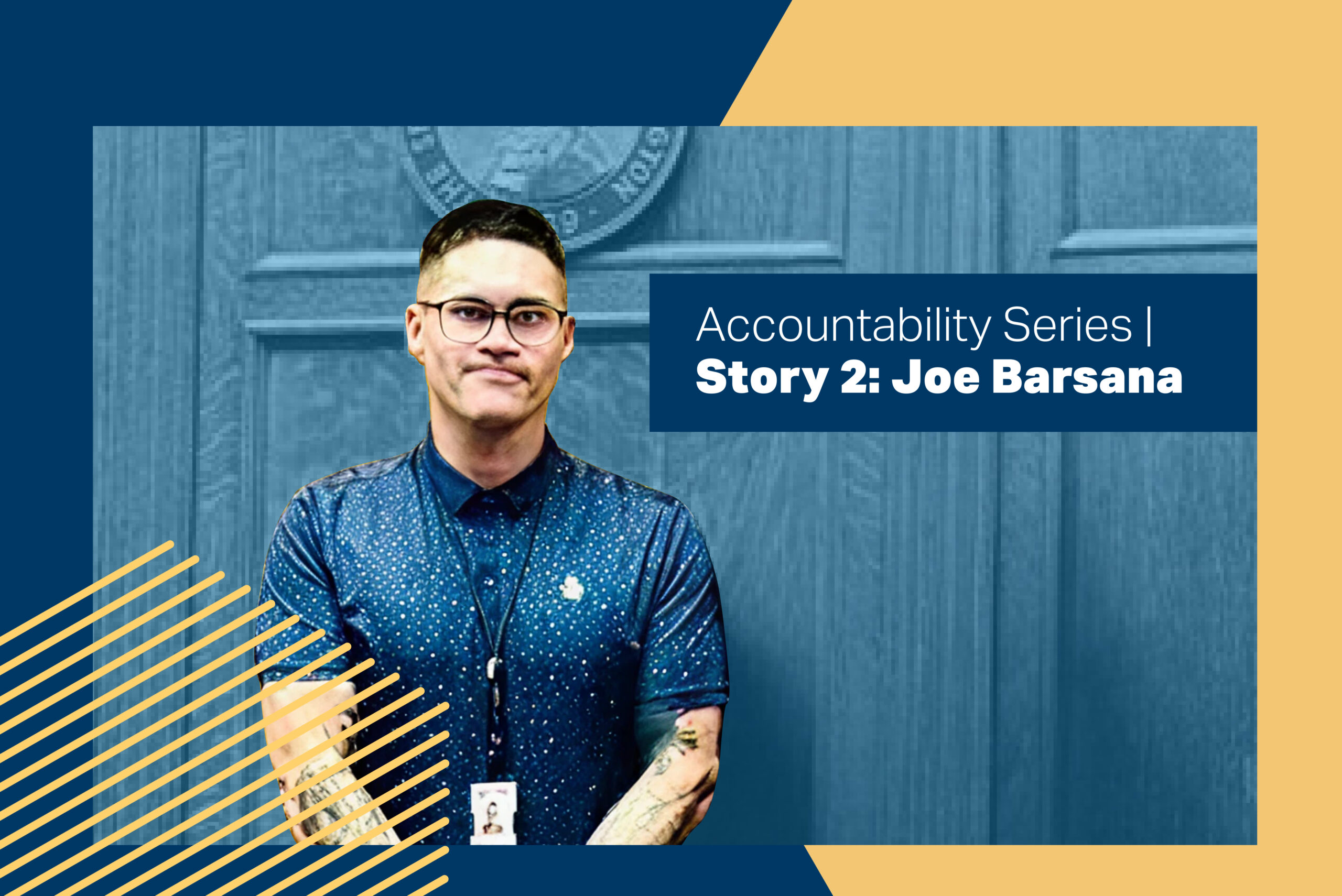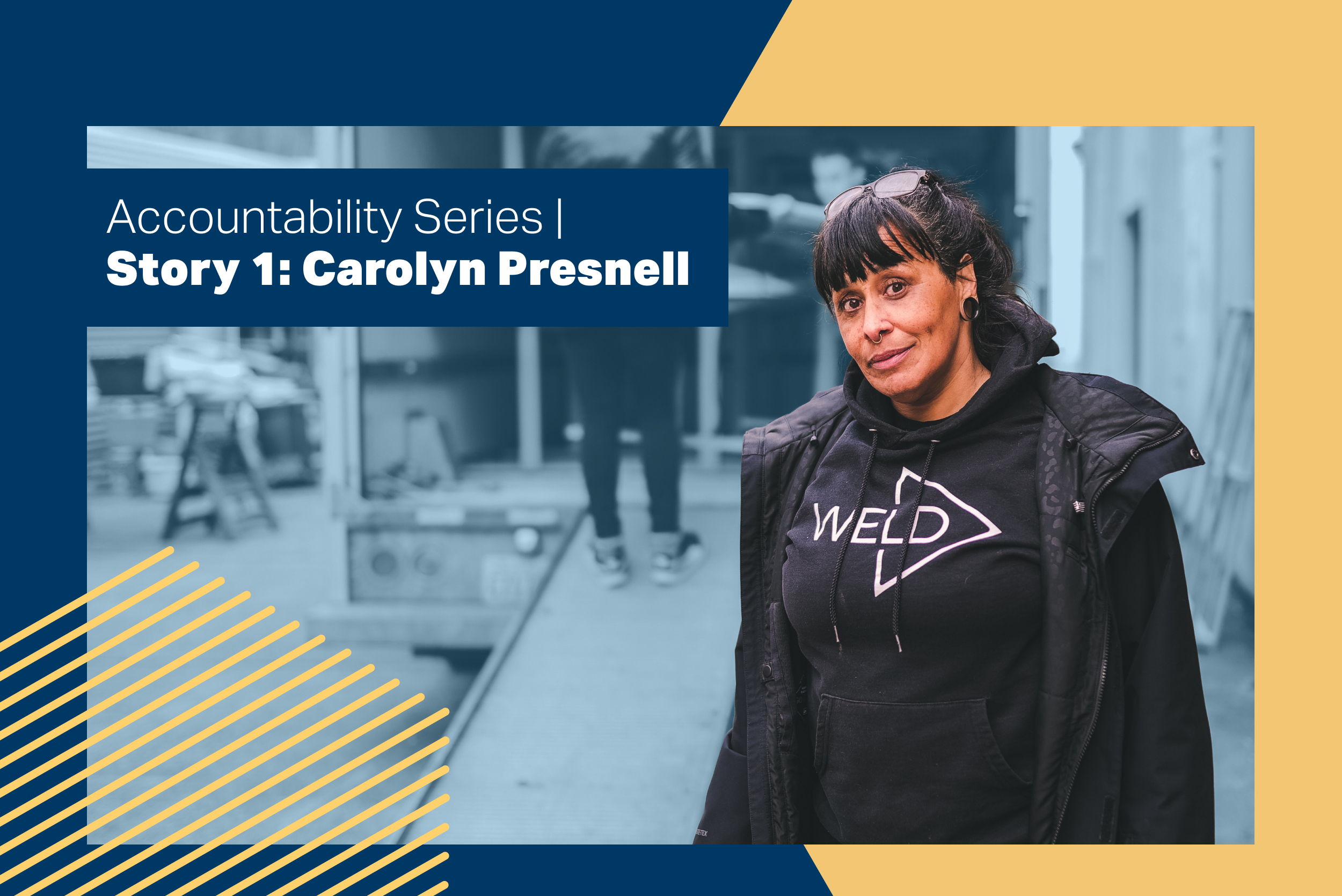The Link Between Domestic Violence and Homelessness
October 22, 2024
By broadening housing and supportive service models that meet the needs of those fleeing domestic violence, we can prevent impacted families from experiencing homelessness.

Research conducted over the past two decades has produced staggering and concerning statistics that illustrate the link between domestic violence and homelessness. Nearly 20 people per minute are physically abused by an intimate partner in the U.S., equating to 10 million victims per year. 38% of all domestic violence victims experience homelessness at some point in their lives. And in a survey conducted on one day in 2016, out of 11,991 unfulfilled requests from adults and children fleeing domestic violence, 66% of those requests were for safe housing and shelter.
There are many factors that contribute to this connection. To make meaningful change in ending this epidemic, it is key to understand the systemic inequity creating barriers for individuals and families escaping domestic violence—and ultimately remove those barriers by providing compassionate, comprehensive support via shelter, housing, and services.

Why is Escaping Domestic Violence So Difficult?
Before this question can be answered, it’s important to note that this framing is, in itself, problematic and perpetuates a culture of victim blaming. It’s a more appropriate question to ask, “Why do abusers hurt their partners, and how do they prevent them from leaving the relationship?”
There are several immediate reasons why domestic violence survivors feel they cannot leave their abusive partners. In many instances, leaving can be more dangerous than staying, with abusers threatening to harm or kill their partner, child, or pet. Psychological manipulation can also cause survivors to feel isolated and cut off from crucial support networks, making them feel like they have nowhere to turn. The majority of survivors also experience financial abuse, where they either have no access to the household’s income, have been prohibited from working, or have had their credit score destroyed by an abusive partner.
Beyond these direct barriers preventing freedom from their abuser, survivors also face systemic obstacles. A lack of easily attainable resources such as emergency shelter options and transportation to service provision sites prevent victims from quickly finding support. Even in light of state and federal laws preventing housing providers from discriminating against victims, some landlords will refuse to rent to someone who has experienced domestic violence. Further, those who have immigrated to the U.S. face language barriers, fears of being separated from their children, and potential threats of family members in their home country.
Best Ways to Support Survivors
The most effective ways to help survivors of domestic abuse are to expand emergency shelter models, transitional housing, and services tailored to their specific needs—while concurrently improving accessibility of these resources.
Emergency shelter, specifically non-congregate options like Pallet that follow principles of trauma-informed design, offer survivors a safe and secure environment that allows families to stay together in their own private space. Transitional housing with integrated supportive service programming is also an ideal model for people escaping an abusive living situation, giving survivors the chance to achieve economic stability and physical well-being.
In 2023, roughly 10.4% of all beds within homelessness service systems were reserved for survivors of domestic abuse and their families. Expanding overall shelter space and placing a concerted focus on tailoring short-term housing solutions to the unique safety needs of survivors is needed. One example is allocating more funding to grants like those administered through the Office on Violence Against Women (OVW).
By understanding the challenges survivors face in seeking out help and providing easily accessible emergency shelter, short-term housing, and services that directly address their needs, individuals and families fleeing abuse will be better supported to achieve long-term safety and freedom.
If you or a loved one are experiencing domestic violence or abuse, please refer to the following resources:
National Domestic Violence Hotline
National Indigenous Women’s Resource Center
Battered Women's Justice Project Criminal and Civil Justice Center
National Health Resource Center on Domestic Violence
Ujima, Inc.: The National Center on Violence Against Women in the Black Community
National Latin@ Network for Healthy Families and Communities


